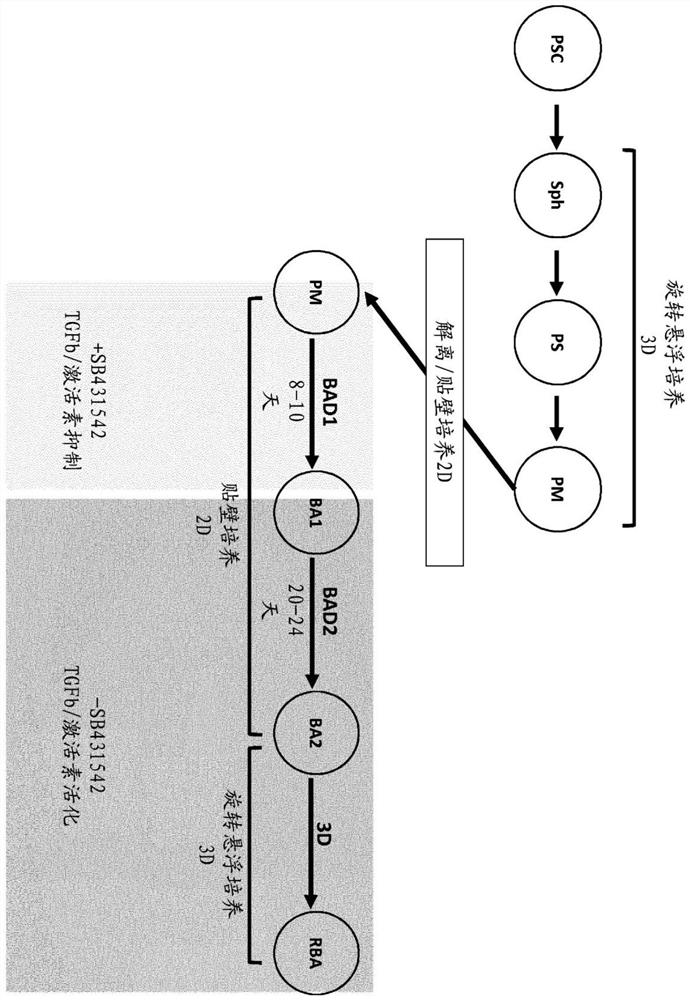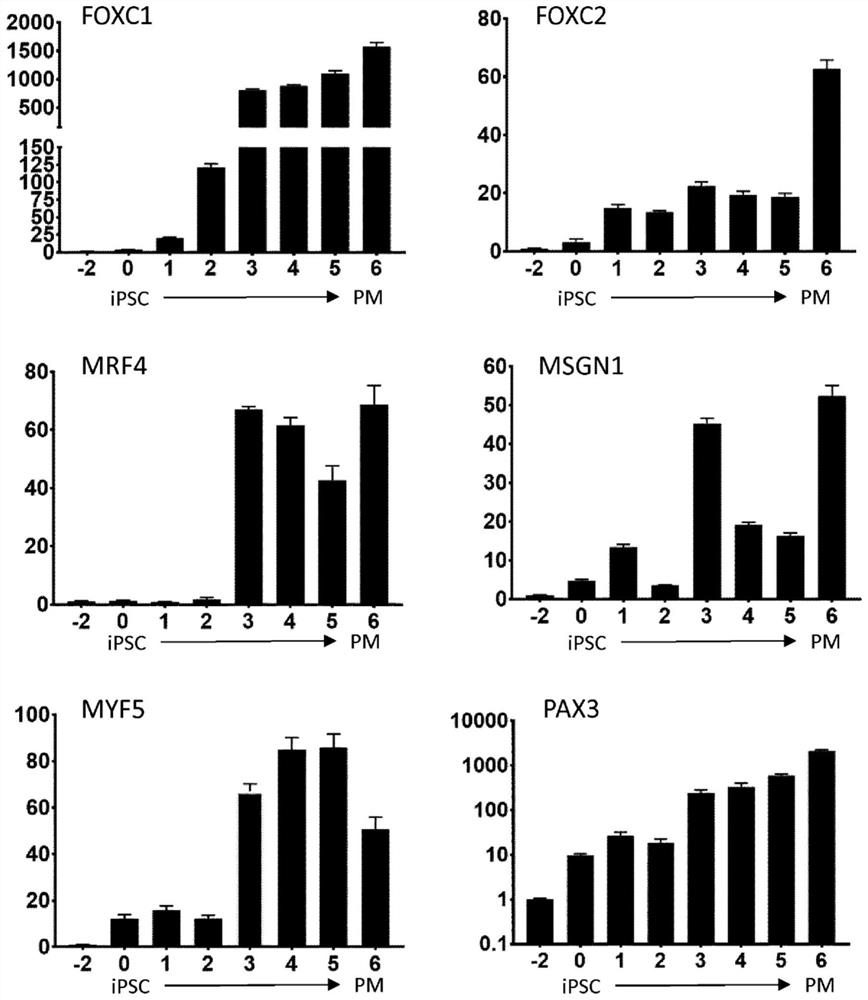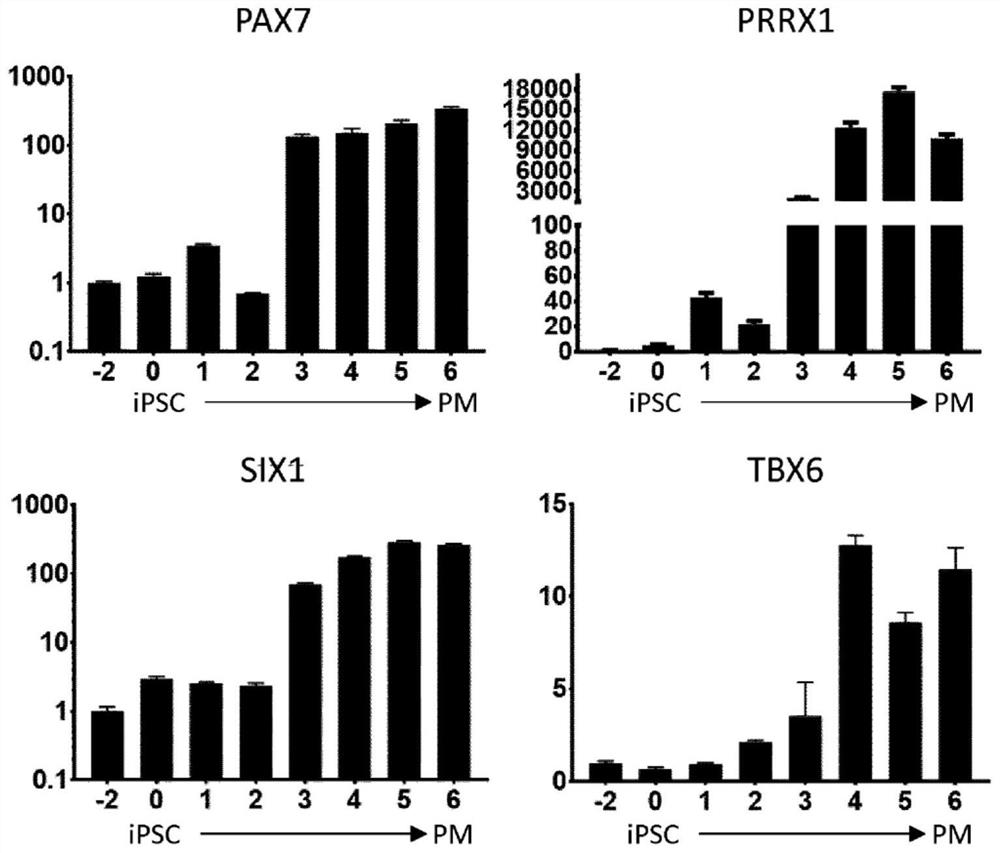Production of brown adipocytes
A brown fat cell technology, applied in the field of brown fat cell generation, can solve the problems of insufficient specificity, genetic changes of brown fat cells, and inapplicability to human brown fat tissue
- Summary
- Abstract
- Description
- Claims
- Application Information
AI Technical Summary
Problems solved by technology
Method used
Image
Examples
Embodiment 1
[0227] Materials and methods
[0228] Cell Culture and Differentiation
[0229] Human pluripotent stem cells (PSCs) were harvested at 50,000 cells / cm 2 The human pluripotent stem cells were plated on polystyrene culture plates (Thermo-Fisher, Waltham, MA) coated with Geltrex LDEV-Free hESC qualified low growth factor basement membrane matrix (Thermo-Fisher, Waltham, MA) The dilution was 1:200 in glutamine-free DMEM / F-12 (Corning, Corning, NY). Medium for PSC maintenance, spheroid formation, paraxial mesoderm and brown adipocyte differentiation was achieved using chemically defined basal medium (DBM) supplemented with specific factors. DBM consisted of glutamine-free DMEM / F-12 supplemented with 2% Probumin (EMD Milipore, Billerica, MA), 1x antibiotic-antifungal (Corning, Corning, NY), 1x MEM optional Amino acid (Corning, Corning, NY), 1x trace element A (Corning, Corning, NY), 1x trace element B (Corning, Corning, NY), 1x trace element C (Corning, Corning, NY), 50 μg / mL ...
Embodiment 2
[0254] Example 2 - Human iPSC-BA engraftment in mice
[0255] Human brown adipocytes (hiPSC-derived BA cells) generated by the method of the present invention were implanted into two groups of mice and subcutaneously encapsulated in the device. In one group, mice were injected with forskolin (FSK) to stimulate brown fat cells. In another group, mice implanted with brown fat cells were not stimulated with FSK. Control mice were implanted with empty devices. Three weeks after implantation, all groups were evaluated for PET-SCAN in vivo imaging as well as ex vivo PET-SCAN imaging of the transplanted devices. As analyzed by PET-SCAN ex vivo imaging, the group implanted with FSK-stimulated brown adipocytes showed an increased signal for labeled glucose compared to the group implanted with non-FSK-stimulated brown adipocytes. Mice implanted with empty devices showed no signal.
[0256] Calorimetric analysis was performed on groups of mice implanted with encapsulated human brow...
PUM
 Login to View More
Login to View More Abstract
Description
Claims
Application Information
 Login to View More
Login to View More - R&D
- Intellectual Property
- Life Sciences
- Materials
- Tech Scout
- Unparalleled Data Quality
- Higher Quality Content
- 60% Fewer Hallucinations
Browse by: Latest US Patents, China's latest patents, Technical Efficacy Thesaurus, Application Domain, Technology Topic, Popular Technical Reports.
© 2025 PatSnap. All rights reserved.Legal|Privacy policy|Modern Slavery Act Transparency Statement|Sitemap|About US| Contact US: help@patsnap.com



